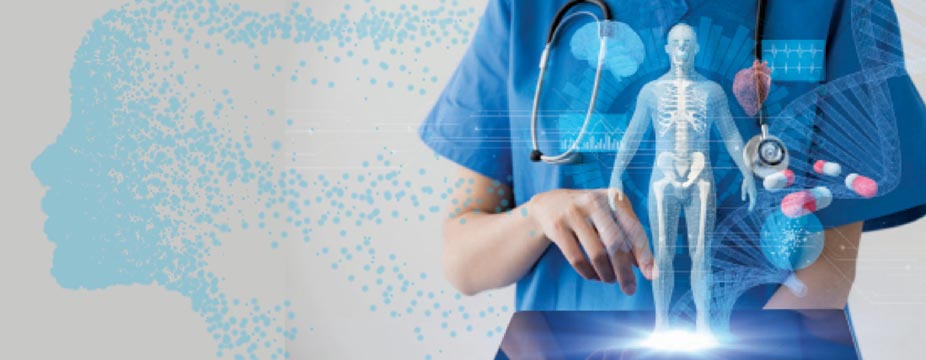|
Getting your Trinity Audio player ready...
|
Deep learning for radiology has been a buzz in recent times. The successful applications of deep learning have renowned applications in every sector, and the same pertains to healthcare. In terms of medical imaging interpretation by a human expert, it is quite limited because of subjectivity, the complexity of the image, extensive variations, and unique structures. The deep learning model relies on decision-making trees to drive a result, and the team of medical experts practiced randomized decision trees, which are successfully applied to machine learning and medical imaging. Practicing deep learning in medical imaging has progressed in recent years. Leveraging deep learning-based decision trees to diagnose medical images can be more reliable, and the scalability of this model increases with getting deeper and deeper into these decision trees. Today’s technology is playing a prominent role in the medical field, like medical image processing, computer-aided diagnosis, image interpretation, image fusion, image recognition, and image segmentation. The successful application of deep learning in medical imaging is effectively diagnosing diabetic retinopathy, cardiac imaging, gastrointestinal disease detection, and tumor detection. Accurate diagnosis depends upon image acquisition and image interpretation. The improved quality and sustainable growth of deep learning systems in the recent images improve the quality of radiological images. Because of the availability of enormous data sets, and extensive variation in patient-to-patient data, the traditional models are less reliable. The evolution of machine learning and deep learning models can harness complex data sets in enormous volumes. The layered architecture of artificial neural networks is the most effective approach in using a deep learning model to extract more reliable output information after diagnosing a medical image. Discover the top applications of deep learning in medical imaging below. 1. Diabetic Retinopathy We commonly find diabetic retinopathy in common in patients suffering from diabetics for prolonged periods. The early detection of the disease can help patients in opting for required care. The manual process for identifying diabetic retinopathy is difficult and time-consuming. As this disease hardly shows symptoms during the early period, the unavailability of equipment and expertise may lead to damage when treatment is required. Applied deep convolutional neural networks can detect the disease with specified symptoms using advanced computational techniques, which is merely possible to the human eye. 2. Gastrointestinal (GI) diseases identification Gastrointestinal diseases infect all the organs involved in digestion, absorption, and excretion. In identifying and diagnosing diseases related to GI, deep learning is playing a vital role. Using deep convolutional neural networks in diagnosing images generated using wireless capsule endoscopy, en-teroscopy, and X-ray studies can reduce diagnosing time and help doctors in making fast decisions. 3. Cardiac Imaging Deep learning has become the most widely used approach for cardiac imaging in recent years. The high availability of cardiac image datasets has encouraged reproductive research and in development of data-based models to outperform the traditional cardiac image diagnosis. Leveraging the deep convolutional neural network for cardiac imaging has promised results for image segmentation and diagnosing CT and MRI scans. Whereas manual identification of CAC in cardiac CT requires expert advice. 4. Tumor Detection According to WHO records, globally, about 1 in 6 deaths is because of cancer and approximately 70% of the deaths from cancer occur in low- and middle-income countries. And using deep learning models can reduce the time spent on treatment and increase patient outcomes. The technology-driven solution is an optimal choice for countries, which want to improve healthcare architecture with reduced costs. The trained deep neural networks and artificial neural network models can identify the tumor cells and inspect the spread and the urgency of the treatment required. The above-mentioned are the top 4 applications of deep learning in medical imaging. The emerging application of deep learning in medical imaging includes Alzheimer’s detection, Parkinson’s disease detection, Pneumonia identification, Histological and Microscopical elements detection, etc. Soulpage IT solutions designed, developed, and deployed an AI-Powered model to perform medical imaging. Our model is currently leveraged in diagnosing pneumonia and other 14 pathologies related to lung diseases. We proudly introduce the AI-powered solution for medical imaging (chestX), aiming to provide quick insights and detect diseases with utmost accuracy. Our solution has advanced data science capabilities to meet the emerging challenges in healthcare and explores new opportunities ahead in industry transformation. If you need any help with idea validation, proof-of-concept, Data Science consulting, large-scale AI implementation, Big Data Engineering, or a creative solution for your Medical Imaging data. You are at the right place.
Deep learning for Radiology: Medical Imaging Automation
Talk to our experts

